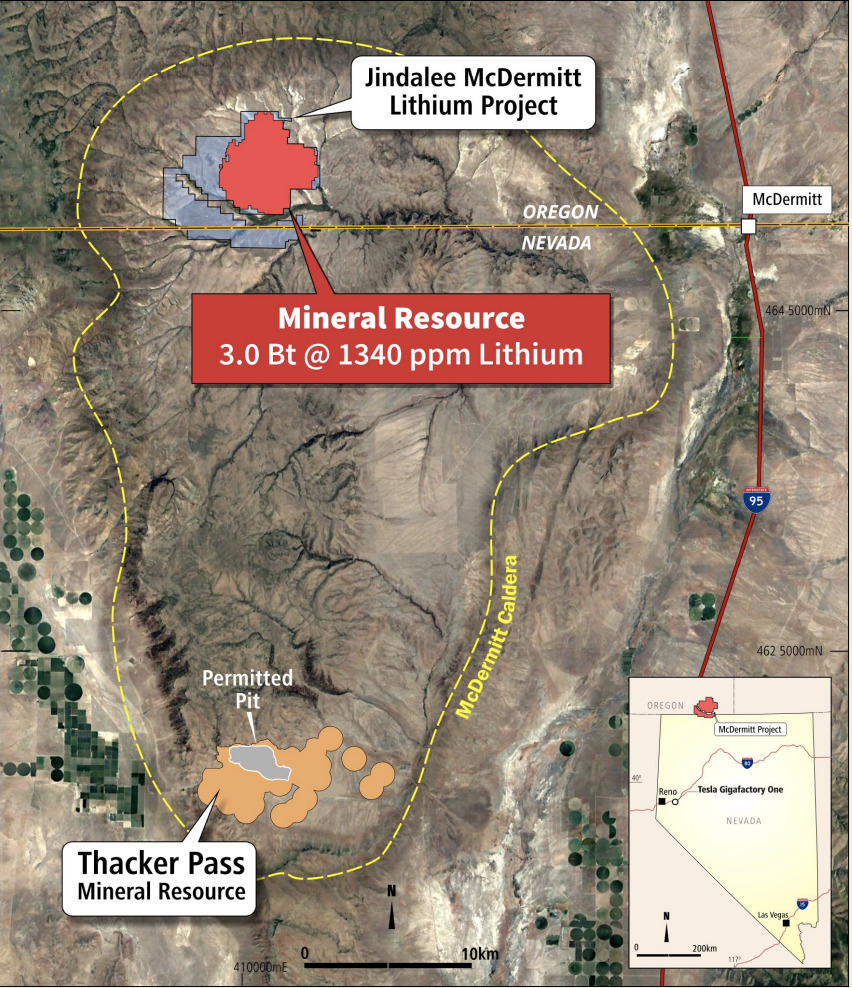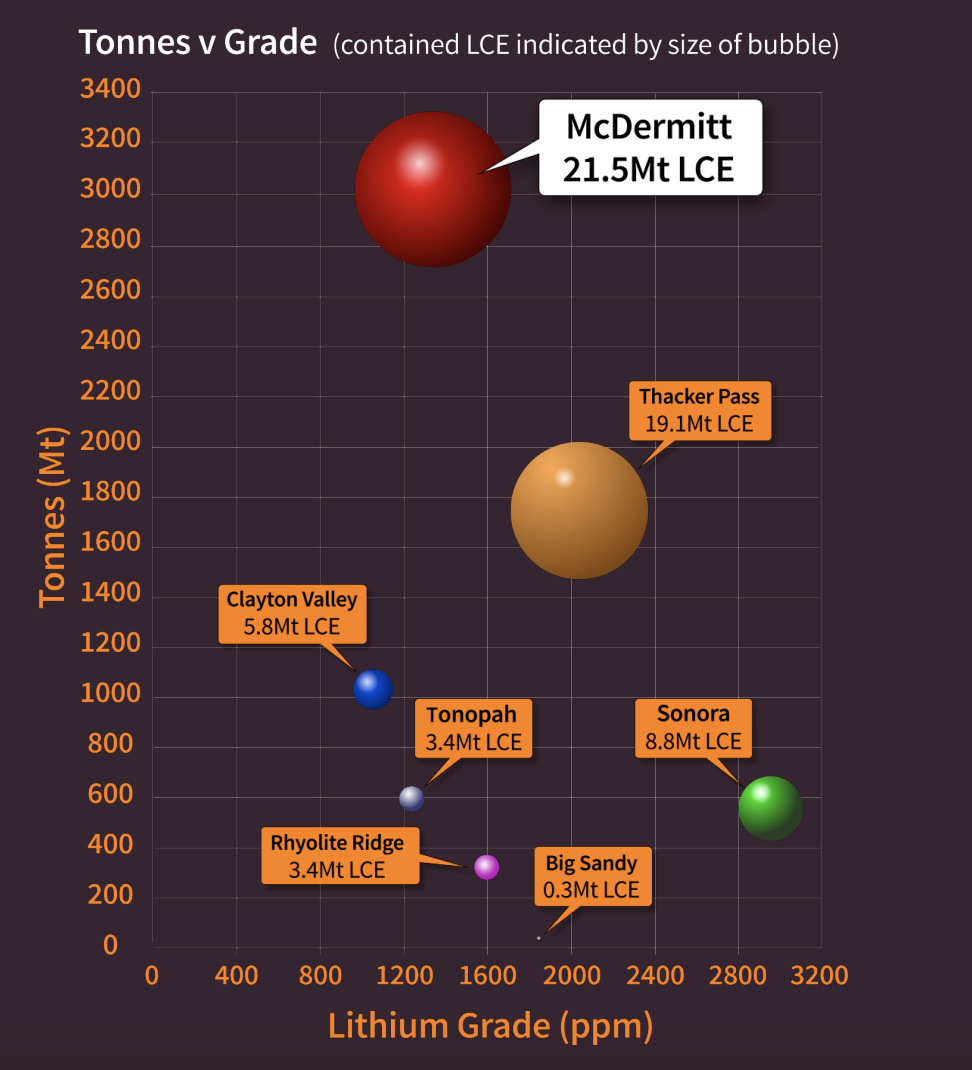Jindalee’s 22-year journey to acquiring and developing the largest lithium resource in the USA

More than two decades after its IPO, Jindalee Lithium has found a company-making asset in the McDermitt lithium project in Oregon, US. Pic via Getty Images
When Lindsay Dudfield founded Jindalee Resources some 22 years ago, the thought of developing what could be the largest lithium deposit in the United States was anything but comprehensible.
Only a few companies worldwide were genuinely searching for lithium, let alone mining it, and you could count on one hand the number of ASX-listed companies trying to crack what many perceived as an impossible challenge, being the US resources industry.
Jindalee, of course, did not start out as a US-focused lithium company in 2002. Rather it began life as another unique entity for the Australian market – a project generator – a type of investment proposition much more familiar to our Canadian counterparts.
Remarkably, Jindalee would not go back to the market for another 17 years after its $2.5 million IPO. The reason for that is simple: Dudfield and his team believed they finally had a “company-making” asset on their hands in the form of the McDermitt lithium project in Oregon.
The company recently rebranded as Jindalee Lithium (ASX: JLL) and is currently undertaking a highly anticipated PFS on the McDermitt project, which has now surpassed the nearby Thacker Pass deposit being developed by Lithium Americas as the largest lithium resource in the US by contained lithium.
Major changes are also unfolding at a board and management level with former Oz Minerals project director Ian Rodger joining the company as CEO this month and respected finance guru Wayne Zekulich set to become non-executive chair on February 1, succeeding the long-serving Justin Mannolini.
Dudfield, who remains an executive director of the company, recently sat down with Stockhead to reflect on the company’s achievements over the past two decades, the story behind the acquisition of the McDermitt project and why he believes there is plenty of upside left for longstanding Jindalee shareholders.
‘Like finding the Pilbara back in the day’
In late 2017, amidst the excitement of the first global lithium boom, Dudfield was pondering the next opportunity for the company.
Still wearing the same project generator hat which had served Jindalee so well for the preceding 15 years, Dudfield considered whether the US – only then just emerging as a favourable investment jurisdiction for ASX investors – might be where the next major opportunity in the lithium space could present itself.
Dudfield also considered whether the sedimentary-hosted lithium deposits being turned down by many groups due to a perception they were uneconomic were in fact an untapped opportunity waiting to be properly exploited.
“I’ve always been really interested in how unconventional hydrocarbons transformed the United States and how it went from being a major importer of oil, in particular, to turning around and becoming a major exporter of natural gas and other hydrocarbon products,” he says.
“I’ve always thought it’s pretty amazing how that happened, how terminals that have been built around the coastline of the US to import natural gas were turned around within a few years and they’re now exporting natural gas through those terminals.

“I could see something similar happening in the lithium space with sedimentary-hosted lithium deposits. At the time, they were very big but regarded as being uneconomic, there were challenges with processing ore and so on, and very little support for them.
“The leading exponent at the time was Lithium Americas with their Thacker Pass deposit, which was then the largest lithium deposit in the US, and we could see the way things were going over there, particularly in the US and their desire to electrify the economy, so we decided to go and have a look at some sedimentary-hosted deposits because you could just see the stars aligning.”
Former CEO Pip Darvall was tasked with leading the search for a standout lithium project on hopefully open ground in the US. An open ground find meant the company could potentially own the asset 100% and be in control of its own destiny.
Darvall narrowed the search down to about a dozen projects on the west coast before catching a flight to the States to assess them in the flesh. By March 2018, the list had been whittled down to two: McDermitt and the Clayton North project in Nevada just near Albemarle’s Silver Peak lithium brine operation.
“When we got into the McDermitt area and saw the scale of the mineralised sediments sticking out of the ground – we didn’t know they were mineralised but we assumed they were – and started sampling, we thought: ‘If these come back anomalous in lithium, this could be a bit like finding the Pilbara back in the day’,” Dudfield recalls.
“Of course, they came back anomalous and so we sent out the pegging crews to stake the ground. We still couldn’t believe it was open ground, we thought it must have been a mistake or there was a problem and it wasn’t available for staking because it was a proposed national park or whatever.
“When they got on the ground, there were no other stakes, so once the claims were granted to us in June 2018, that’s when we announced we had acquired the project.”
A ‘very long life’ source of lithium to the US
Jindalee punched the first drill holes into the McDermitt project in September 2018. Only four holes, each 2km apart, were drilled in the maiden exploration campaign but all were anomalous for lithium from surface.
“We called them proof of concept holes, and the concept that it had scale was proved,” Dudfield says.
“We were still in the sediments when the holes were abandoned around 90m, but we were optimistic because we’re exploration geologists. And if you’re not an optimist, you shouldn’t be in the business.
“But safe to say we were very pleasantly surprised at the scale which we had identified, just with that maiden drilling program.”
Fast-forward to February last year and McDermitt’s resource of 3Bt @ 1,340ppm Li (based on a 1,000ppm Li cutoff) for 21.5Mt LCE was confirmed as the largest in the US with regards to contained lithium.
Jindalee subsequently launched a PFS which is expected to be completed mid-year. There is much anticipation both in Australia and the US around how McDermitt will stack up as a mine development proposition, with comparisons inevitably set to be drawn with the under-construction Thacker Pass.
“We need to demonstrate to, I suppose, the sceptics out there that this project has the potential to be a very long life source of lithium to the United States,” Dudfield said.
“Apart from vindicating our focus on McDermitt over the past five years, we think it will also attract investor interest but also support from US government agencies. The US is spending a lot of money and effort to try and onshore production of critical minerals such as lithium to basically underwrite the electrification of their economy.”

“We think being able to demonstrate, through the PFS, the potential of McDermitt will certainly be of great assistance when it comes to talking to government departments about financial and political assistance they can provide to the project.”
The US Department of Energy is understood to be considering a record US$1 billion loan to Lithium Americas for the Phase 1 development of Thacker Pass, having previously issued a US$700 million loan to ASX-listed lithium-boron developer Ioneer (ASX: INR) for construction of its Rhyolite Ridge project in Nevada.
A patient and loyal shareholder base
After almost 22 years managing most day-to-day affairs for Jindalee, Dudfield is still keen to deliver successful results for the company and its long-term, loyal shareholders.
Jindalee was able to fund its own exploration ambitions for the best part of 17 years post its IPO in 2002 via a combination of joint ventures and spin-outs. In fact, the company’s first capital raising post listing came in 2019 – a $1 million rights issue – to keep the drill rigs turning at McDermitt barely a year after acquiring the project.
A placement to the company’s top 10 shareholders and a supporting rights issue to other existing shareholders followed in 2020.
When the timing has been appropriate, Jindalee also divested assets into separately listed vehicles, including gold-focused Alchemy Resources (ASX: ALY) and critical minerals explorer Dynamic Metals (ASX: DYM).
Uranium vehicle Energy Metals (ASX: EME) is arguably the company’s most successful corporate transaction. Jindalee held 40% of the company at the time of its sale to CGN China Nuclear in mid-2020 with shareholders ultimately rewarded with a 55c fully franked dividend.
Dudfield is convinced the company would not have been able to achieve the same market success had it not adopted the project generator model right from the very start.
“Everyone wants to make greenfields discoveries because you get fantastic leverage off them, but it’s very risky exploration and I’m not sure the average investor out there realises how risky it is,” he says.
“We had quite a few joint ventures with Newcrest where we were basically reimbursed for our costs, plus a little more, and then take a free-carried position through to usually the completion of a bankable feasibility study. That meant we didn’t have to put our hand in our pocket again for those projects.
“That’s how you reduce your risk, by having a portfolio until you come across a project that’s just a standout and you can then put everything on it.
“And if you have a shareholder base that isn’t loyal and patient, and have very short-term expectations, then you can’t do what we’ve done. We’re very grateful to our shareholders who have been very loyal and patient and enabled us to run this company the way we have for 20+ years.”
At Stockhead, we tell it like it is. While Jindalee Lithium is a Stockhead advertiser, it did not sponsor this article.
Related Topics

UNLOCK INSIGHTS
Discover the untold stories of emerging ASX stocks.
Daily news and expert analysis, it's free to subscribe.
By proceeding, you confirm you understand that we handle personal information in accordance with our Privacy Policy.








